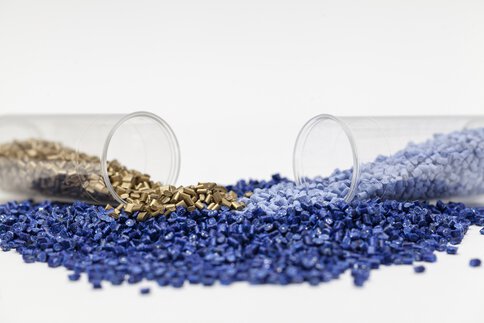Quick raw material control: It’s the monomers that count
More than 300 million metric tons of plastics are made all over the world every year, most of them from fossil resources. Renewable raw materials are gaining ever greater significance. Whether the starting materials are made from petroleum or plants, or obtained from starting materials made by bioengineering: the analysis of the raw materials is key, because contamination at the beginning of the supply chain influences the quality of the end products.
Plastics are macromolecules composed of strings of individual building blocks, the monomers. The catenation reaction, also referred to as polymerization, is generally susceptible to contamination. Thus, just a small quantity of water may cause unwanted breaking of the chain. Analyzers based on the Karl Fischer titration can be used to determine the water content of the monomers.
Inorganic impurities, such as iron, must also be controlled, because even traces of them will act as catalysts and interfere with the desired process. This is a problem, for example, in the production of polyurethane from ethylene glycol. Voltammetry is an obvious electrochemical method for measuring the iron content, easy to do without having to prepare any specimens. The alkali metals sodium and potassium—which are also critical—can be determined quickly in parallel using ion chromatography.
Apart from that, the characterization of the monomers is indispensable. In this respect the determination of the number of functional groups—such as the acid, hydroxyl and isocyanate groups—is decisive. For this purpose automatic systems for potentiometric titration or near-infrared spectroscopy are used. This helps detect a decline in quality due to storage and transportation. Spectroscopy shows whether premature partial polymerization or dimerization has occurred in the monomer. This method can also be applied to determine added stablilizers which prevent such reactions.
In the incoming control of raw materials Raman spectroscopy is becoming more and more common. Within a few seconds, convenient handheld devices provide the certainty that the material supplied is actually what had been ordered.
In brief: It doesn’t take much to identify and solve problems at the beginning of the supply chain, which might otherwise result in rejects and high costs as well as jeopardize the safety of the process.
This might be also of interest to you
From monomers to plastics
In polymerization nothing is left to chance. More about process monitoring.

Find out about the trends and developments in fields of raw material analysis at analytica:
polymer • monomer • plastics • polymer analysis • analysis • polyurethane • raw material control • partial polymerization • Karl Fischer titration • voltammetry • ion chromatography • NIR spectroscopy • Raman spectroscopy
